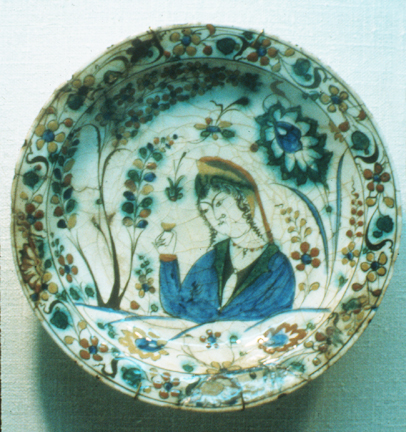During the Late Islamic Period (1400-1800 CE), Persia and the Islamic world would slowly recover from the incessant invasions and upheaval caused by the Mongol incursions of Tamerlane of Samarkand. Tamerlane (Timur the Lame) was a ruthless military leader who sacked and plundered many cities, but respected sacred buildings and collected art and artisans at his capital of Samarkand. The predominant influence on Islamic Art and ceramics during this period was Ming dynasty China, especially the preference for the use of cobalt blue painted ceramics on a white ground. Still unable to duplicate the high temperature fired porcelain clay body used by the Chinese, Islamic potters continued use of the white fritware discovered in the previous Middle Islamic period. During the 1600's, internal problems in China slowed the export trade in porcelain, and Dutch merchants looked to Persia to produce pottery in the Chinese style for export. It is commonly assumed that blue and white ware originated in China, but in fact, it was first done in the 9th century in Mesopotamia and then forgotten. Coincidentally or not, it reappears in Persia in the 14th century after recontact with Ming China. Historical sources indicate that the Chinese source of cobalt was Persia. The early 1500's would see the establishment of Safavid rulers at their capital of Tabriz and the beginning of a 200 year period of relative stability. The capital would later move to Isfahan, and a rebirth of the arts and architecture would follow.
Kubachi ware, seen here, was produced in Northern Persia, and is recognized by its white fritware body, painted in polychrome underglaze blue (cobalt), brown (iron) and green (copper) under a clear glaze. Subject matter often included portraits with a floral border. Here a young lady sips tea from a delicate cup in her garden.

'Kubachi' Ware Plate, Safavid Period, Persia, 1500 CE


